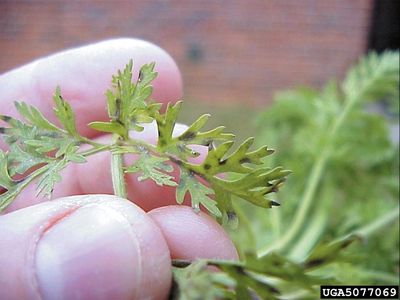What Causes Carrot Leaf Blight?
Leaf blight in carrots can be grouped into three different categories: alternaria leaf blight, cercospora leaf blight, and bacterial leaf blight. Bacterial leaf blight (Xanthomonas campestris pv. carotae) is a very common disease that thrives and spreads in moist environments. It begins as small, yellow to light brown, angular spots on the edges of the leaves. The underside of the spot has a shiny, varnished quality. With time these spots lengthen, dry out, and deepen to dark brown or black with a water soaked, yellow halo. Leaves may take on a curled shape. Alternaria leaf blight (Alternaria dauci) appears as dark brown to black, irregularly shaped spots with yellow margins. These spots usually appear on the lower leaves of the plant. Cercospora leaf blight (Cercospora carotae) appears as tan, circular spots with sharp, definite borders. All three of these carrot leaf blight diseases can kill the plant if allowed to spread.
Carrot Leaf Blight Control
Of the three carrot leaf blight diseases, bacterial leaf blight is the most serious. The disease can quickly explode into an epidemic in hot, wet conditions, so any evidence of symptoms should lead to immediate treatment. Cercospora and alternaria leaf blight are less critical but should still be treated. They can often all be prevented by encouraging air circulation, avoiding overhead watering, encouraging drainage, and planting certified disease-free seed. Carrots should be planted in rotation and grown in the same spot at most once every three years. Fungicides can be use both to prevent and to treat these diseases.
